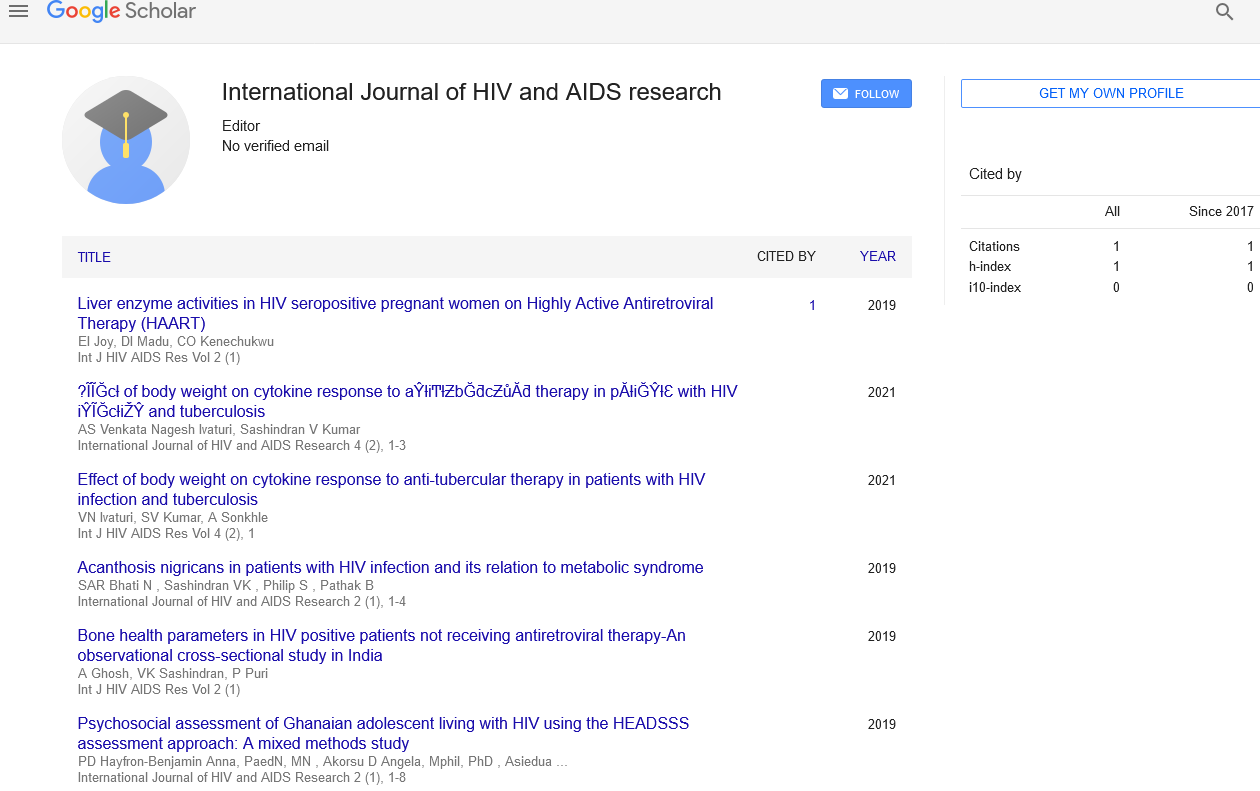
Sign up for email alert when new content gets added: Sign up
Abstract
Clinical Profile Of Neurological Manifestations Of Human Immunodeficiency Virus Patients- A Tertiary Hospital- Descriptive Study
Author(s): Yelda Vyas, Malhar Vyas, Madhvi SanwalkaHuman Immunodeficiency Virus/Acquired Immunodeficiency Syndrome (HIV/AIDS) is a global pandemic. As per the UNAIDS report on global AIDS epidemic 2020 globally, an estimated 38.0 (31.6–44.5) million people were living with HIV in 2019. The current Centers for Disease Control and Prevention (CDC) classification system for HIV infected adolescents and adults categorize persons based on the clinical conditions associated with HIV and CD4 counts. Using this system any HIV infected individual with a CD4 count of less than 200/mm3 has AIDS by definition regardless of the presence of symptoms or opportunistic diseases. A decrease in CD4 count leads to various Opportunistic Infections (OIs) in these patients and serious manifestations related to HIV. This was a tertiary hospital based cross sectional study of 101 cases. All HIV positive patients with neurological signs and symptoms irrespective of age were included in this study. Patients who had HIV-unrelated developmental, neurological, medical, and neurobehavioral conditions that impaired cognition were excluded from this study A detailed history of patients like age, sex, address, family history, mode of transmission, treatment history and history of coexisting illness were taken and entered in proforma. A thorough examination and other routine and special investigations like ELISA (enzyme-linked immunosorbent assay) and CD4 count were done. In the present study 73 cases (72.27%) belonging to age group 30 years to 49 years were affected, followed by 15years-29years of age group. 81 cases (80.19%) of males were affected, followed by 20 cases (19.80%) of females. Out of 101 patients 74 cases (73.26%) had history of long standing fever and 27 cases (26.73%) had negative history. 85 cases (84.15%) had persistent cough for more than a month, while 16 cases (15.84%) had negative history. 36 cases(35.64%) had history of diarrhea for more than 1 month, and 65 cases (64.35%) had absence of such history. 89 cases (88.11%) had history of unexplained weight loss, and 12 cases (11.88%) had no such history. Tuberculous Bacterial Meningitis (TBM) was the most common manifestation in 32 cases (31.68%), viral encephalitis in 15 cases (14.85%), cryptococcal meningitis in 14 cases (13.86%). Progressive Multifocal Leukoencephalopathy (PML) was the least common manifestation seen in 1 case (0.99%) only. Present study had 78 cases (77.22%) of WHO stage 4 cases and 23 cases (22.77%) of stage 3. In conclusion this study emphasizes the fact that tuberculosis and cryptococcus infections are the frequent opportunistic infections associated with HIV. There is a direct correlation between CD4 count and severity of infection, hence indicate level of immunity and disease. It also shows that various neurological manifestations are due to these opportunistic infections. This dual course of HIV and tuberculosis infection should be controlled by providing awareness of the disease transmission, progression and prevention. Due to high cost of Anti-Retroviral Drugs (HAART) and low availability of HIV centres, patients lack access to proper treatment which inturn leads to development of opportunistic infections in later course of disease. CD4 counts is important in managing specific therapy for HIVpositive patient.




